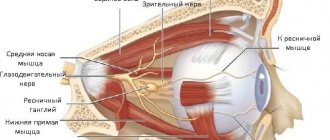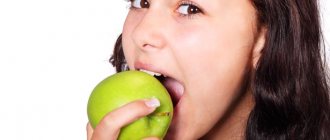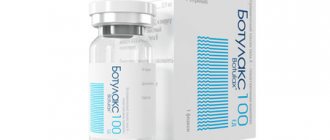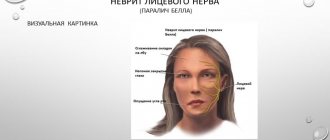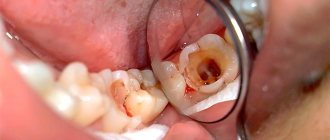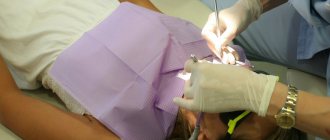Bruxism and hypertonicity of the masticatory muscles are inextricably linked processes. Bruxism is a condition when the muscles of the jaw involuntarily spasm, as a result of which a person begins to grind his teeth. There is an increased tone of the masticatory muscles.
Very often, this problem becomes a serious obstacle to dental procedures, such as implantation, prosthetics, and installation of veneers. Bruxism can interfere with quality orthodontic treatment. Increased tone of the jaw muscles overloads the implants, and dentures are destroyed much faster.
Bruxism also has a negative effect on “native” teeth. The enamel is damaged and worn away, and the teeth become loose. Therefore, if such a problem arises, it is necessary to look for ways to solve it. Thanks to modern medicine, you can get rid of bruxism for a long time.
Symptoms of bruxism and the main causes of hypertonicity:
- the surface of the teeth grinds down, they become flatter;
- the enamel is damaged, fillings fall out, teeth begin to loosen, their integrity is violated, the gums become raw and bleed;
- crunching and clicking appears in the jaw when opening and chewing;
- teeth grinding occurs when a person sleeps;
- it is difficult to open and close your mouth, you feel tired and overstrained masticatory muscles;
- you often unconsciously clench your jaw, most of the time they are tense;
- malocclusions appear;
- the lower part of the face takes on a square shape;
- posture worsens.
Consult an orthodontist
Very often, the main cause of bruxism is a malocclusion. Due to the fact that the teeth do not close correctly, and chewing requires effort, tension accumulates in the masticatory muscles during the day, and then involuntary contractions occur during sleep.
Until bite problems are corrected, treatment will not bring complete recovery. Therefore, consultation with an orthodontist is recommended for bruxism.
If treatment is indicated, the doctor will advise which system is best suited and in what time frame the goal can be achieved.
How is the bite corrected during bruxism?
The main treatment for bruxism in adults is braces. But since this structure is voluminous, the question arises: will the braces be damaged due to such a problem as teeth grinding at night?
If the overlap of the teeth is deep enough, then the system needs to be protected. In this case, overbite fillings are placed on the teeth: they are made from the same material as conventional fillings, but are installed on the enamel without processing it. The fillings are convex, so they prevent the teeth from closing deeply. After treatment, they can be easily removed without damaging the enamel.
Overbite fillings (blue)
Botulinum therapy as a method of treating bruxism
Botulinum therapy is effectively used to relieve overstrain in the masticatory muscles, fights bruxism and can relieve involuntary teeth grinding at night.
In medicine, as in cosmetology, botulinum toxin type A is used. It is able to immobilize a muscle or relieve tension in it, acting locally. This effect lasts only for a certain period of time. But during this time the body manages to get used to the new state, and the overstrain disappears completely.
Botulinum toxin type A is a neurotoxin produced by the bacteria Clostridium botulinum. It is capable of blocking impulses from the central nervous system sent to the muscles. In fact, botulinum toxin paralyzes them, breaking the connection between muscle fibers and the brain.
The drug is injected into the required areas, so it has an effect exclusively on the desired areas. Dosages of butolotoxin are completely safe, and its effect is reversible. After six months, it is completely eliminated from the patient’s tissues.
Tension of the masticatory muscles - how it manifests itself with age
Let's start with the deep (medial and lateral) muscles. The medial one (No. 3 in the picture) is responsible for the movement of the jaw to the right and left. Have you noticed that some older (and not so old) women have an asymmetrical jaw - larger on one side and smaller on the other? This just indicates a spasm of this muscle on one side. Therefore, in order to have a symmetrical face without distortions, it must be relaxed.
The lateral (No. 1) masseter muscle pushes the lower jaw forward and pushes it back. It greatly affects the bite. I think everyone has seen this in others or maybe in themselves:
Here is a clear example of excessive tension in the lateral masticatory muscles - they literally pull the lower jaw inward.
But there is also the opposite situation - when the muscles are too weak, in hypotonicity:
The lower jaw then moves forward. Of course, now this is corrected with braces. However, with the help of exercises this can be done without them. And if you already wear braces, you can significantly speed up the results with exercises. This is confirmed by orthodontists.
Spasms of the temporal muscles lead to the fact that the eyebrows begin to float down and the face becomes gloomy. The habit of clenching your teeth (mostly unconsciously, from stress, anger, irritation) causes tension in the facial muscles of mastication - those at the corners of the jaw. This causes the oval of the face to float; the face may even become longer with age. Bruxism may develop, tooth decay may begin, and gum disease may appear - because chronic spasm of these muscles blocks normal blood circulation.
Main stages of treatment
The first step is preparation for the procedure. It's simple. For a few days, it is necessary to eliminate alcoholic beverages from the diet, and also reduce caffeine consumption. Before the procedure, you should not take antibiotics or blood thinners.
The second step is the introduction of butolotoxin. The procedure lasts about twenty minutes. The required dose is divided into three to four injections. The injection needles are very thin, so the procedure is virtually painless.
The third step is the rehabilitation period. Butolotoxin acts instantly, but gains its full strength after two weeks. After injections, it is not recommended to overheat or cool the treated areas. Sports and facial massage should be excluded.
First aid
If a spasm appears suddenly and there is no one nearby, you should do the following:
- Take a comfortable relaxing position (preferably sitting or lying down).
- Gentle massage of the lower facial region (2-3 minutes), without intense pressure. There is no need to touch painful areas.
- Alternately applying cold and warm (for 20-30 minutes with a 10-minute interval).
To relieve spasm, it is recommended to relax and abstract from problems.
Further treatment
To draw up a treatment plan, a preliminary diagnosis of the cause of the spasm is necessary. An examination of the patient's oral cavity is carried out in the dental office. To relax the muscles, the doctor injects Botox.
Depending on the diagnosed pathologies, treatment is carried out:
- To reduce pain, a blockade is performed using anesthetics.
- To treat inflammatory processes, the patient is prescribed antiseptic rinses and antibiotic therapy.
- To eliminate abscesses, incision and drainage are performed.
- If nervous disorders of the nervous system are detected, the patient is indicated for neurological treatment.
- The patient undergoes oral sanitation and treatment of carious cavities. If the spasm is caused by errors in prosthetics, it may be necessary to correct the bite using orthopedic structures.
- The reconstruction of the jaw apparatus is carried out by a dental surgeon.
- To normalize muscle tone, physiotherapeutic treatment is prescribed: massage, procedures.
- In severe cases, hospitalization may be required.
Treatment prognosis
If trismus is associated with internal factors, then treatment lasts several weeks. Serious disorders of organs and systems with concomitant trismus require complex treatment aimed at treating the underlying pathology. Most infections require long-term treatment, and the result depends on the initial condition of the patient and timely seeking medical help.
Implantation for bruxism
Implants can be placed if an integrated approach has been taken to the procedure. In cases where the dental system has not worked correctly for a long period of time, dentists perform treatment using complex implantation.
If excessive tension in the jaw muscles was caused by a reason such as psychosomatics, then the patient is referred for examination to a specialized specialist. Only then can you begin to restore your teeth.
Consider treatment with Botox injections
In severe cases, botulinum toxin injections into the masticatory muscles can be used to reduce the manifestations of bruxism. After administration of the drug, the muscles partially relax and the spasm is relieved. This is followed by relief from headaches, toothaches and other unpleasant symptoms. Botulinum toxin lasts up to 6–8 months, then the muscles regain sensitivity and the ability to contract. This should be enough time to stop grinding your teeth.
There is no way to get rid of bruxism once and for all. But with an integrated approach, you can get a good result: reducing the load on the temporomandibular joints, restoring enamel, and improving the quality of sleep.
Prevention of bruxism
Preventive measures for hypertonicity of the masticatory muscles of the jaw imply measures that can prevent bruxism. Treatment of this disease without diagnosis and examination by a qualified specialist can be hazardous to health. As soon as you notice the first signs of this pathology, you need to consult a doctor as soon as possible. He will prescribe diagnostics that will help identify a possible problem and effectively eliminate it.
The patient may need to be examined by specialists such as a neurologist or psychotherapist. Increased tone of the masticatory muscles has different etiologies. Doctors in these areas can prescribe various treatments, such as physical therapy, magnesium-based medications. All this is decided on an individual basis.
Preventative measures may help if approved by the patient's physician. You can easily massage the cramped areas. There is a set of exercises that can reduce the manifestations of bruxism. They must be done daily before going to bed.
Stressful situations must be avoided. You should rest more, get enough sleep, and spend a lot of time outdoors. Avoid caffeine and take baths with herbs that have a sedative effect. These measures will be an excellent prevention of muscle spasms, and will also enhance the effect of complex treatment.
Contact the Denta-Labor dental laboratory for solutions to issues regarding the protection of your teeth during bruxism.
Getting rid of a nightmare
Brux checher
We should immediately warn you: bruxism today, despite all the progressive achievements of modern dentistry, remains an open and not fully studied topic. And also a serious problem in terms of diagnosis and treatment. But this does not mean that treatment can be postponed.
For effective treatment of bruxism, it is necessary to pay attention to two aspects: dental (mandatory visit to the dentist) and psychological (constant work by the patient on himself).
Visit to the dentist
Diagnosis and treatment of bruxism begins with a visit to the dentist. After a thorough examination of the oral cavity, the doctor determines signs of grinding and, if necessary, treats damaged teeth. For an objective diagnosis of the disease, a specialist uses a brux checker - a special mouthguard. The item is selected separately for each patient, and then inserted overnight.
Brooks checker (Brux checher) was developed by Professor Sadao Sato from Kanagawa Dental College (Japan). It helps the dentist both at the diagnostic stage and at the treatment stage of bruxism. Brooks checker allows you to identify occlusal obstacles and select the appropriate treatment method. To make a brux checker, only an impression of the upper and lower jaw is required and then a special mouthguard is made.
Based on the prints on the bruxchecker, the dentist analyzes the nature of the violations and identifies deficiencies. If necessary, the patient can be referred for consultation to a periodontist or orthodontist to replace crowns and correct the bite.
For mild cases of bruxism, dentists recommend protective orthodontic mouth guards . Special jaw pads form a barrier between the teeth to prevent them from touching.
Drug treatment of chewing movements consists of taking calcium-containing drugs and magnesium .
Degrees of trismus
Trismus has three degrees or forms:
- at the first stage - the mildest degree of trismus, when the mouth opens 3-4 cm;
- at the second stage - moderate severity, the mouth can only be opened slightly, about 1-2 cm;
- at the third stage - a severe form, the jaw does not open at all or for a small distance.
The consequences of long-term tension and strong pressure in the umbilical nervous system can be damage to the enamel or dentin, chips, and loss of dental units.
3 more exercises
- The “Pressing” exercise can strengthen the muscular corset of the tongue. You need to forcefully press it to the sky. Next, you should stay in this position for 10-15 seconds. Then, again with effort, pull your tongue towards the larynx. And again remain in the accepted position for 10 seconds. Next, press firmly with your tongue on the dental crowns of the upper row. Stay in this position for 10-12 seconds. There should be 3 approaches. Breathe through your nose and close your lips tightly.
- An equally productive exercise is “Show off your tongue.” We need to show it as much as possible. Try to reach it first to the edge of your nose, and then to your chin. There must be at least 20 approaches.
- The “Tongue Candle” exercise will also help. It is done very simply. You should open your mouth, just forcefully, to feel a slight stretch. Now try to reach the upper palate with your tongue. In this position, the hyoid part is quite tense. There are 10 approaches as usual. It is more productive to perform this task with your head tilted up.
Diagnostics
Early cases of hemifacial spasm are sometimes difficult to distinguish from facial myokymia, tics or myoclonus, which may be caused by pathological processes in the cerebral cortex or brainstem. In such cases, neurophysiological testing is the most valuable diagnostic method.
Wide and variable synkinesis on eyeblink tests and high-frequency discharges on electromyography (EMG) with associated clinical manifestations are diagnostic criteria for hemifacial spasm. Stimulation of one branch of the facial nerve can spread and cause a response in the muscle innervated by another branch. Synkinesia is absent in essential blepharospasm, dystonia or epilepsy. Needle myography shows irregular, short, high-frequency burst potentials (150-400 Hz) of motor units that correlate with clinically observed facial movements.
Visualization methods
Magnetic resonance imaging is the diagnostic method of choice when there is a need to exclude compression effects. Angiography of the cerebral vessels is generally of little value in the diagnosis of hemifacial spasm. Ecstatic blood vessels are rarely identified, and these vessel findings may be difficult to correlate with nerve effects. Performing angiography and/or magnetic resonance angiography is typically used to perform surgical vascular decompression.

